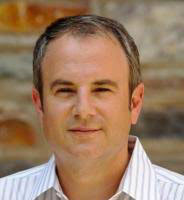About This Webinar
This webinar, presented by Adam Wax, Ph.D., will introduce new methods for evaluating skin injury using spectroscopic measurements based on coherence imaging. These methods were developed by Wax and his group at the
Biomedical Interferometry, Optics and Spectroscopy (BIOS) lab at Duke University. Wax will discuss spectroscopic OCT (SOCT), an extension of OCT technology for analyzing structural as well as spectroscopic information. He will present his lab’s application of SOCT for burn injuries and also address SOCT’s potential in the area of cancer detection.
Clinical evaluation of skin viability after injury or surgery currently relies on visual and tactile inspection and other techniques that can have limited efficacy or be difficult to use. For more accurate evaluation, the BIOS group has developed time-frequency analysis methods of optical signals to show imaging of in vivo distribution of molecules and contrast agents such as fluorescein. This webinar will cover technical advances made by the group, including increasing penetration depth of optical imaging and characterizing spectroscopic changes in response to burn injury. The presenter will discuss the results obtained from using these techniques, the potential future role of depth-resolved optical spectroscopy in the clinical setting, and new approaches for improving depth penetration that his group is investigating.
About the presenter:

Adam Wax, Ph.D., is professor of biomedical engineering and physics at Duke University. He is the founder and president of Lumedica Inc., a producer of low-cost OCT devices and the licensee of the patents underlying the spectroscopic OCT technology used by the BIOS group. He received dual B.S. degrees, one in electrical engineering from Rensselaer Polytechnic Institute and one in physics from the State University of New York at Albany, in 1993. He received M.A. and Ph.D. degrees in physics from Duke University in 1996 and 1999, respectively.
Wax joined the George R. Harrison Spectroscopy Laboratory at the Massachusetts Institute of Technology as a postdoctoral fellow immediately after his doctorate and joined the faculty at Duke University in 2002. He is a fellow of the Optical Society of America, SPIE, and the American Institute for Medical and Biological Engineering and was named Outstanding Postdoc Mentor in 2012. His research interests include optical spectroscopy for early cancer detection and novel microscopy and interferometry techniques.
Who should attend:
Researchers, clinicians, lab managers, and those who design and develop devices for spectroscopy, OCT, and/or medical imaging. Researchers and physicians who are studying, evaluating, and/or treating patients with skin injuries, such as burns, or with skin cancers such as melanoma. This webinar will be valuable for anyone who is interested in learning about advances in the technology and use of OCT and SOCT, either as a clinician, researcher, or designer of spectroscopic instruments. Its relevance is not limited to only those who are directly involved in the diagnosis and treatment of skin injury.